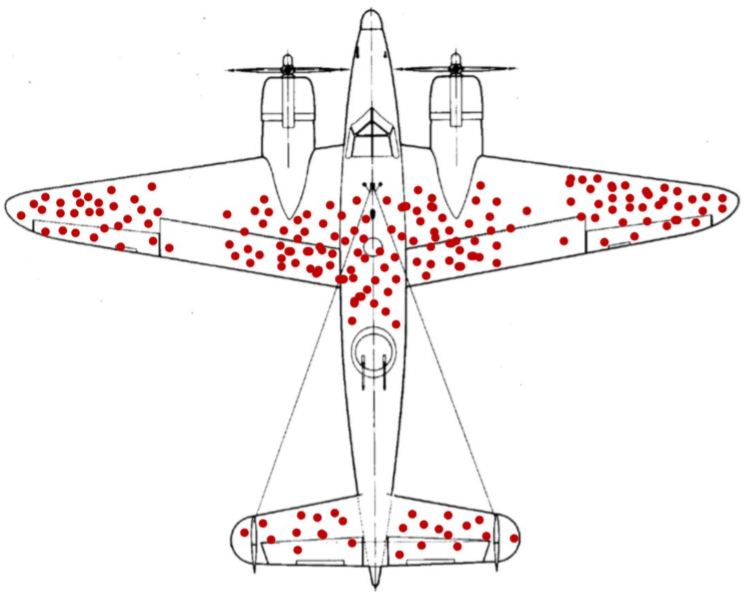Curiosities 31 - Mathematics in War
João Henrique Barboza Jorgetto • Mar 29, 2024
Typically, great war stories involve heroic acts, significant battles, almost impossible missions, and violent confrontations. Heroes and villains, settings and outcomes change, but violence and courage remain in every part of the Second World War story. However, in today's story, we will talk about a case where a man, from his office desk, far from the battle fronts, saved many lives of young Allied aviators.

The British Royal Air Force alone, the famous RAF, lost around 46% of its crew in combat. The Allies needed to study how to increase their bombers' survival so they could return home. Many of them indeed had a reputation for being very resistant, like the American B-17s and B-29s and the British Avro Lancasters that returned with almost unbelievable damage. The solution would be to install more armor in places where the damage would be more fatal.


To find out what these locations would be, the researchers then assessed the places where the aircraft that had been hit most often received attacks. They then arrived at the example below:

The result showed that the fuselage was hit absurdly, almost twice as much as the engines, while the wings (and the fueling system) were even more of a target for German fighters. It was clear there that the "Swiss cheese" shown by the large bullet holes in the fuselage showed that the points to be reinforced were clearly in the fuselage and wing of the plane.


Then, a mathematician, Abraham Wald, captured what no one had noticed before. The research result showed the opposite of what had been taken as accurate. Wald showed that the fuselage and wing were, in fact, the parts that most withstood the enemy's blows, while the engines, tail, and some sectors of the front almost ruled the death of the bombers. The explanation was simple: the analyses were carried out on aircraft that survived the attacks, while those that crashed were not the target of this study. Therefore, these aircraft only returned because they were not hit in the most dangerous places. It was then necessary to better interpret the situation and protect places from deadly attacks.

It is worth mentioning that Wald was born in what is now Romania, and as a young man with a Ph.D. in mathematics, he had to flee Austria at the beginning of the war in 1938, as he was Jewish and realized that his life there would be at risk. He and his family then fled to the United States of America, where even though he was included in the list of scientists and research experts as part of the American Statistics Research Group, he was still poorly seen and investigated as a potential enemy, given his origin. This suspicion meant that Wald did not have access to various data that could be useful in his research.
This story shows how common sense cannot always be correct. All it took was a look from another perspective for armor to be better used and more lives saved during the war. Genius, right?
Copyright © 2024 - Aero Online
